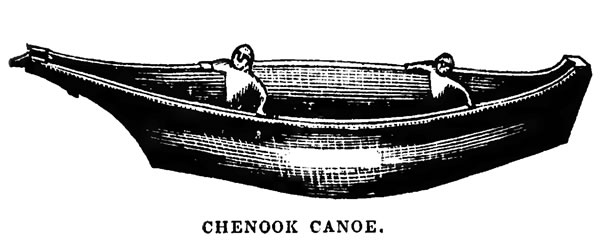Chinook Navigation |
Diet |
Homes |
Culture |
Potlatch |

The Chinook inhabited the area at the mouth of the Columbia River, on the present-day border of Washington and Oregon. The river was essential in all aspects of life, especially in hunting and trading. Like other Northwest Coast tribes, the Chinook carved remarkable canoes from the abundant sources of timber, but did not carve totem poles like their neighbors to the north. Instead, the Chinook were famous from their horn carvings, which were fashioned from the horns of mountain goats and bighorn sheep. The Chinook were prolific traders, and often traveled the network of rivers in the Pacific Northwest trading with other villages and White frontiersmen. They bartered fish products, furs, cedar, carvings, and slaves. They even evolved a special trading language known as Chinook Jargon. Used throughout the Pacific Northwest, Chinook Jargon was a combination of English, French and various indigenous languages that was useful in trading with different peoples. The Chinook used shells as a form of currency. The Chinook practiced many interesting spiritual beliefs and ceremonies. One of the most important ceremonies was the First Salmon Rite, in which each family group welcomed the annual migration of the salmon from the Pacific Ocean through Chinook Territory. The Chinook also believed in the vision quest, a ceremony in which adolescent boys and girls ventured into the wilderness to find guardian spirits that would help give them powers in hunting or curing or bestow upon them good luck and new songs and dances. Chinook parents also engaged in the practice of flattening the foreheads of their babies by restraining the forehead in tight bandages on the cradleboard while the bones were still soft.
|